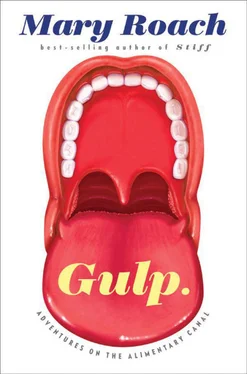Also effective: pledges. Though it now seems difficult to picture it, Wansink says government anthropologists had PTA members stand up and recite, “I will prepare organ meats at least ____ times in the coming two weeks.” “The act of making a public commitment,” said Wansink, “was powerful, powerful, powerful.” A little context here: The 1940s was the heyday of pledges and oaths. [22] Pledge madness peaked in 1942. The June issue of Practical Home Economics reprinted a twenty-item Alhambra, California, Student Council antiwaste pledge that included a promise to “drive carefully to conserve rubber” and another to “get to class on time to save paper on tardy slips.” Perhaps more dire than the shortages in metal, meat, paper, and rubber was the “boy shortage” mentioned in an advice column on the same page. “Unless you do something about it, this means empty hours galore!” Luckily, the magazine had some suggestions. An out-of-fashion bouclé suit could be “unraveled, washed, tinted and reknitted” to make baby clothes. Still bored? “Take two worn rayon dresses and combine them to make one Sunday-best that looks brand new”—and fits like a dream if you are a giant insect or person with four arms.
In Boy Scout halls, homerooms, and Elks lodges, people were accustomed to signing on the dotted line or standing and reciting, one hand raised. Even the Clean Plate Club—dreamed up by a navy commander in 1942—had an oath: “I, ____, being a member in good standing…, hereby agree that I will finish all the food on my plate… and continue to do so until Uncle Sam has licked the Japs and Hitler”—like, presumably, a plate.
To open people’s minds to a new food, you sometimes just have to get them to open their mouths. Research has shown that if people try something enough times, they’ll probably grow to like it. In a wartime survey conducted by a team of food-habits researchers, only 14 percent of the students at a women’s college said they liked evaporated milk. After serving it to the students sixteen times over the course of a month, the researchers asked again. Now 51 percent liked it. As Kurt Lewin put it, “People like what they eat, rather than eat what they like.”
The phenomenon starts early. Breast milk and amniotic fluid carry the flavors of the mother’s foods, and studies consistently show that babies grow up to be more accepting of flavors they’ve sampled while in the womb and while breastfeeding. (Babies swallow several ounces of amniotic fluid a day.) Julie Mennella and Gary Beauchamp of the Monell Chemical Senses Center have done a great deal of work in this area, even recruiting sensory panelists to sniff [23] They are to be excused for not tasting it too. Amniotic fluid contains fetal urine (from swallowed amniotic fluid) and occasionally meconium: baby’s first feces, composed of mucus, bile, epithelial cells, shed fetal hair, and other amniotic detritus. The Wikipedia entry helpfully contrasts the tarry, olive-brown smear of meconium—photographed in a tiny disposable diaper—with the similarly posed yellowish excretion of a breast-fed newborn, both with an option for viewing in the magnified resolution of 1,280 × 528 pixels.
amniotic fluid (withdrawn during amniocentesis) and breast milk from women who had and those who hadn’t swallowed a garlic oil capsule. Panelists agreed: the garlic-eaters’ samples smelled like garlic. (The babies didn’t appear to mind. On the contrary, the Monell team wrote, “Infants… sucked more when the milk smelled like garlic.”)
As a food marketing consultant, Brian Wansink was involved in efforts to increase global consumption of soy products. Whether one succeeds at such an undertaking, he found, depends a great deal on the culture whose diet you seek to change. Family-oriented countries where eating and cooking are firmly bound by tradition—Wansink gives the examples of China, Colombia, Japan, and India—are harder to infiltrate. Cultures like the United States and Russia, where there’s less cultural pressure to follow tradition and more emphasis on the individual, are a better bet.
Price matters too, though not always how you think it would. Saving money can be part of the problem. The well-known, long-standing cheapness of offal, Mead wrote, condemned it to the wordy category “edible for human beings but not by own kind of human being.” Eating organs, in 1943, could degrade one’s social standing. Americans preferred bland preparations of muscle meat partly because for as long as they could recall, that’s what the upper class ate.
So powerful are race- and status-based disgusts that explorers have starved to death rather than eat like the locals. British polar exploration suffered heavily for its mealtime snobbery. “The British believed that Eskimo food… was beneath a British sailor and certainly unthinkable for a British officer,” wrote Robert Feeney in Polar Journeys: The Role of Food and Nutrition in Early Exploration. Members of the 1860 Burke and Wills expedition to cross Australia fell prey to scurvy or starved in part because they refused to eat what the indigenous Australians ate. Bugong-moth abdomen and witchetty grub may sound revolting, but they have as much scurvy-battling vitamin C as the same size serving of cooked spinach, with the additional benefits of potassium, calcium, and zinc.
Of all the so-called variety meats, none presents a steeper challenge to the food persuader than the reproductive organs. Good luck to Deanna Pucciarelli, the woman who seeks to introduce mainstream America to the culinary joys of pig balls. “I am indeed working on a project on pork testicles,” said Pucciarelli, director of the Hospitality and Food Management Program at—fill my heart with joy!—Ball State University. Because she was bound by a confidentiality agreement, Pucciarelli could not tell me who would be serving them or why or what form they would take. Setting aside alleged fertility enhancers and novelty dare items (for example, “Rocky Mountain oysters”), the reproductive equipment seem to have managed to stay off dinner plates worldwide. Neither I nor Janet Riley, spokesperson for the American Meat Institute, could come up with a contemporary culture that regularly partakes of ovaries, uterus, penis, or vagina simply as something good to eat.
Historically, there was ancient Rome. Bruce Kraig, president of the Culinary Historians of Chicago, passed along a recipe from Apicius , for sow uterus sausage. For a cookbook, Apicius has a markedly gladiatorial style. “Remove the entrails by the throat before the carcass hardens immediately after killing,” begins one recipe. Where a modern recipe might direct one to “salt to taste,” the uterus recipe says to “add cooked brains, as much as is needed.” Sleeter Bull, [24] Bull was chief of the University of Illinois Meats Division and founding patron of the Sleeter Bull Undergraduate Meats Award. Along with meat scholarship, Bull supported and served as grand registrar of the Alpha Gamma Rho fraternity, where they knew a thing or two about undergraduate meats.
the author of the 1951 book Meat for the Table , claims the ancient Greeks had a taste for udders. Very specifically, “the udders of a sow just after she had farrowed but before she had suckled her pigs.” That is either the cruelest culinary practice in history or so much Sleeter bull.
I would wager that if you look hard enough, you will find a welcoming mouth for any safe source of nourishment, no matter how unpleasant it may strike you. “If we consider the wide range of foods eaten by all human groups on earth, one must… question whether any edible material that provides nourishment with no ill effects can be considered inherently disgusting,” writes the food scientist Anthony Blake. “If presented at a sufficiently early age with positive reinforcement from the childcarer, it would become an accepted part of the diet.” As an example, Blake mentions a Sudanese condiment made from fermented cow urine and used as a flavor enhancer “very much in the way soy sauce is used in other parts of the world.”
Читать дальше












